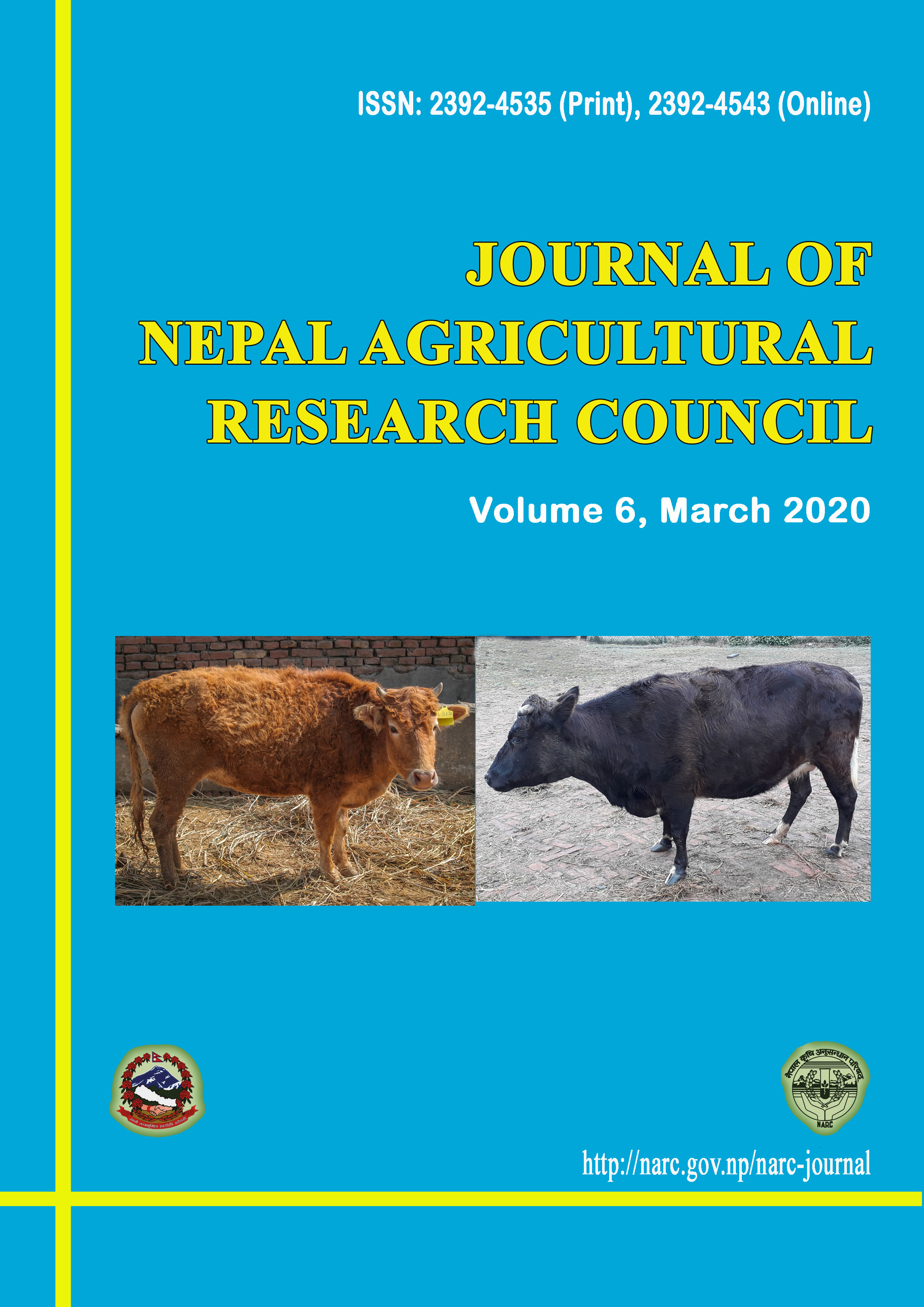Nutrient Management for Higher Productivity of Swarna Sub1 under Flash Floods Areas
DOI:
https://doi.org/10.3126/jnarc.v6i0.28121Keywords:
Flash floods, nutrient management, seedling age, Swarna Sub1, yieldAbstract
Two field experiments were conducted at Regional Agricultural Research Station, Tarahara, Nepal during 2012 and 2013 to determine the effect of agronomic management on growth and yield of Swarna Sub1 under flash floods. The first experiment was laid out in a split plot design with three replications; and four different nutrient combinations at nursery as main plots and three age groups of rice seedlings as sub plots. The second experiment was laid out in a randomized complete block design and replicated thrice; with three post flood nutrient doses at six and 12 days after de-submergence (dad). The experiments were complete submerged at 10 days after transplanting for 12 days. The survival percentage, at 21 dad, was significantly higher in plots planted with 35 (90.25%) and 40 (91.58%) days-old seedlings compared to 30 days-old seedlings (81.75%). Plots with 35 days-old seedlings produced 5.15 t ha-1 with advantage of 18.83% over 30 days-old seedlings. Plots with 100-50-50 kg N-P2O5-K2O/ha at nursery recorded the highest grain filling of 79.41% and grain yield of 5.068 t/ha with more benefit. Post flood application of 20-20 N-K2O kg/ha at 6 dad resulted in higher plant survival and taller plants, leading to significantly higher grain yield of 5.183 t/ha and straw yield of 5.315 t/ha. Hence, 35-40 days old seedlings raised with 100-50-50 kg N-P2O5-K2O /ha in nursery and the additional application of 20-20 kg N-K2O /ha at 6 dad improved plant survival and enhanced yield of Swarna Sub1 under flash flood conditions. The practice has prospects of saving crop loss with getting rice yield above national average yield leading to enhanced food security in the flood prone areas of Nepal.




